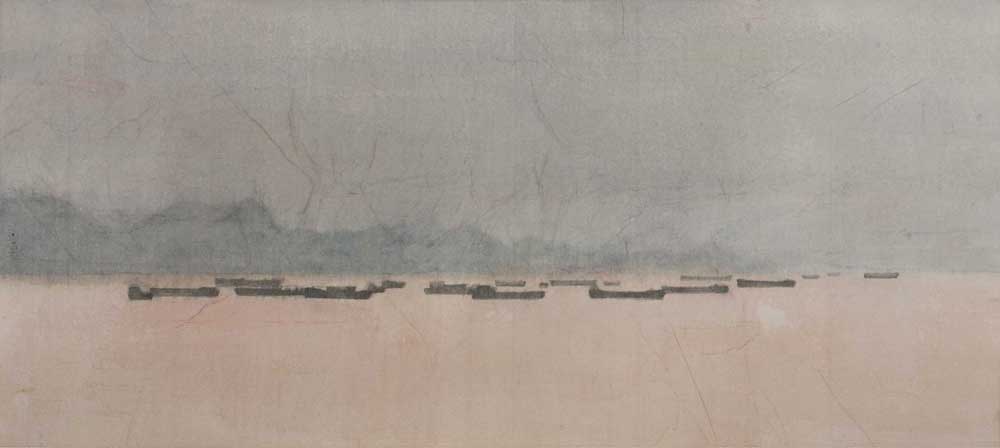Collective Individualism I
Opening:Sept. 6th
Date: Sep 5th to Oct 24th

航-18-纸本设色-49x109cm-2014
Press Release
Swiss psychiatrist Carl Jung developed the concept of the collective unconscious based on Freud's studies. Collective unconscious is hidden in the bottom of our unconscious mind; it is the mark left by generations of human experience. No matter how different our personal consciousness is, as a particular species of human being, we sometimes have similar behaviors. Collective unconscious is not forgotten, but most of us are unaware of it, as if it is the under-water part of an island.
Today's Chinese artists practice art individually, as if they are isolated islands spread over the ocean. The work they present to the public is like the above-water part of the island. Nevertheless, the part underneath the water, that exists in the depth of their unconscious mind, is their collective unconscious, i.e. traditional Chinese literati aesthetics and the current Chinese social reality. Whether they embrace it or deny it, this inevitably influences their artistic practice. Based on this hypothesis, AroundSpace Gallery developed the Collective Individualism series in order to examine contemporary Chinese artists’ work, and the interaction between the artists’ individualism and their collective unconscious.
The ten artists included in Collective Individualism I each have individual practice and style; although utilizing different mediums, their persistent quest to achieve artistic perfection, originality, and craftsmanship is universal and identical. Ding Beili extended her favorite theme, landscape, in a transparent coloring on rice paper--- tranquil and serene. Dou Rongjun’s Tide series framed the dynamic tides in a single moment, full of tension. Huang Yang's woodblock prints, 36 Scenes, reveals today’s social pictures in sumptuous visual vocabulary. Bi Rongrong explored various possibilities in 3-D and 2-D worlds. Tang Shu’s most stunning new work is a landscape based on the historical site, Orchid Pavilion, both symbolic and real, presenting an interesting perspective. These artists’ individual practices collectively make up the backbone of contemporary Chinese art.
pasha de cartier replica watches
Audemars Piguet Replica
patek philippe aquanaut replica
replica ebel watches
replica jaeger-lecoultre complicated
invicta watches for men
hermes evelyne replica
rolex explorer replica
replica panerai luminor 1950
franck muller replica uk
replica sinn u1
replica hublot
replica hublot big bang caviar
ulysse nardin replica

